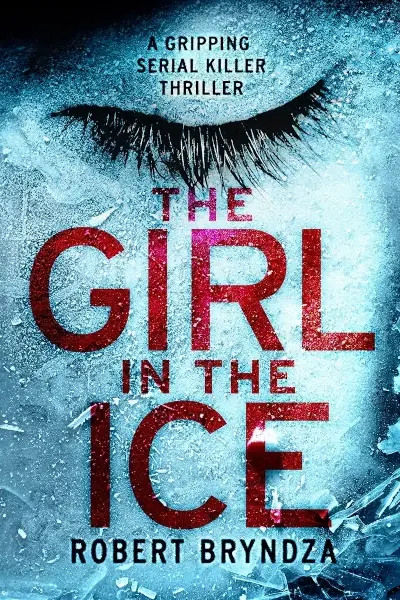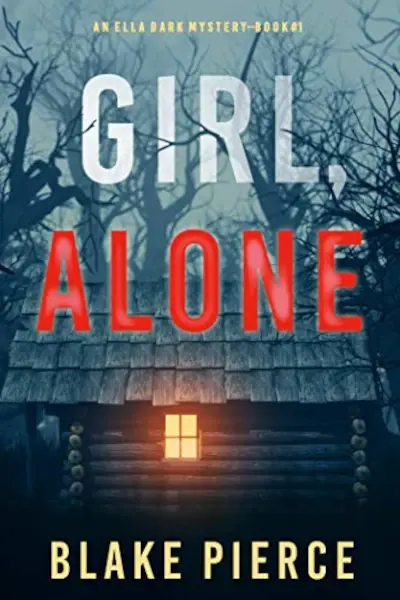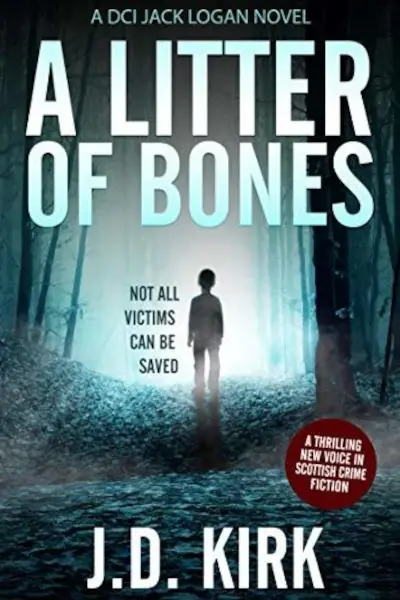Top reviews:

Elderton North Carolina may seem like any old small town but it’s home to Dotty Morgan a clever paranormal detective. Despite her success as a sleuth her school life hasn’t exactly gotten easier as Dotty still faces daily teasing from boys on the basketball team. And even though she’s spent the past year training at the local MMA studio she’s not much use in a fight; after she and her girlfriend Hannah are attacked in the locker room following one of Hannah’s wrestling matches this reality is thrown into stark relief. The incident leaves the girls shaken and when strange rumors and shadowy strangers begin to circulate Dotty’s detective instincts kick into overdrive. Her suspicions are confirmed when a swarm of vampires descends on the town for a sinister gathering known as the Fifty-Year Feast (“This cycle will herald an era of unrivaled strength and prosperity”). The arrival of a vampire hunter adds another wrinkle when Dotty discovers that not all vampires are monsters. Still she can’t ignore the ones who thirst for blood and power and with Hannah benched by a sledding injury Dotty will have to investigate without her usual backup. Helping her along the way is her fashion-obsessed friend Parker whose style and confidence bring levity and warmth to the bleak snowbound mystery. The narrative juggles horror mystery and moral tension with remarkable grace. Readers will admire Dotty’s courage and vulnerability as she navigates her various relationships and the fine line between good and evil. The pacing never lags as each revelation raises the stakes and forces Dotty to make choices with far-reaching consequences. The novel explores themes of bravery and kindness in an easy-to-follow manner. The vampires are frightening but the story’s power comes from its acknowledgment of the value of different kinds of abilities the bonds of friendship and young love and the hero’s determination to do what’s right no matter what.
Read more...

The Nobel Prize–winning French writer Albert Camus (1913-1960) saw the world through an absurdist lens one polished in his youth in French Algeria his wartime life in the Resistance and his anti-totalitarian activism. The Stranger The Plague and The Myth of Sisyphus still stand as the greatest critiques of modern bureaucratic life since those of Kafka. Camus wrote constantly throughout his life and his notebooks offer a voice-over to the great upheavals of the mid-20th century. Now complete for the first time in a fluent English translation they flash with scintillating phrases. Camus thinks of an opening sentence for a novel (worthy of any Latin American magical realist): “When the evening soup was late it meant that an execution was taking place the next morning.” Or this idea: “Write the story of a contemporary cured of his heartbreak by nothing other than the long contemplation of a landscape.” Camus records what he thinks are the central questions of modern life: Is rebellion necessary in the face of unbridled power? How can we find the strength to live in a society that has “pushed nihilism to its extreme conclusions?” When should we stop reading and writing and start acting? We get lines on moral responsibility that we might use today: “They say I’m opposed to violence no matter what. That would be about as smart as being opposed to the wind always blowing in the same direction.” And yet for all his politics and his polemics Camus affirms the human focus of his work: “I only depict individuals opposed to the machinery of the State because I know of what I speak.” Camus invites us now to speak of what we know and to act on it.
Read more...

Luchs opens by explaining that he was first drawn to poetry by a “fascination with its music its magic its mystery and its power to move me emotionally intellectually and spiritually.” As the author notes the essays collected here are “not academic treatises” but personal reflections written to encourage “increas[ed] understanding and enjoyment.” He begins with Wallace Stevens’ “Of Mere Being” analyzing the poem and then including one of his own as a reaction. This structure—part essay part creative echo—sets the form for the rest of the collection forming an ongoing dialectic between reading and writing. Luchs unpacks his selections’ language rhythms and historical contexts before distilling his reactions into verse. The result is a dialogue between criticism and creation in which reading becomes a catalyst for writing. The author moves through a wide range of poets and eras using the same framework to explore the meaning of each writer’s work. He discusses Philip Larkin’s “Annus Mirabilis” in the context of the 1960s cultural shifts that surrounded it and turns to D. H. Lawrence with an eye on psychological and emotional texture. Nobel laureate Wislawa Szymborska whom Luchs calls “highly improbable” receives both biographical attention and effective succinct interpretation: “She’s telling us who she is here and by implication asking us who we are.” The author broadens his scope to include poets from varied traditions and backgrounds such as Chilean author Gabriela Mistral and Black poet Lucille Clifton noting the importance of engaging with different perspectives. Other essays focus on Jorge Luis Borges Federico Garcia Lorca and Lewis Carroll (whose “Jabberwocky” Luchs traces through its many cultural impacts). The work closes by reaching back to Homer before rounding out the tour with more contemporary poets including Charles Simic and James Tate.
Luchs writes with a tone that is both pedagogical and inviting balancing humility with the learned wit of a scholar. The author’s enthusiasm for the poets he discusses recalls a warm teacher eager to share an infectious passion for the subject. He offers concise confident introductions swiftly capturing each poet’s defining traits; of Robinson Jeffers Luchs identifies the Greeks and the King James Bible as the poet’s “lifelong companions.” The author often leans into a slightly stuffy bookish sense of humor but his timing keeps it playful—he writes of David Ignatow “And that ladies and gentlemen is how you talk to your daughter about death yours and hers and everyone’s.” A refreshing self-awareness grounds the work as Luchs mentions his own struggles with fiction: “Anyway don’t hold your breath” he jokes making him approachable and relatable. His criticism is similarly accessible best suited to readers and writers seeking to deepen their appreciation of great poets; those desiring more rigorous academic analysis may find his readings somewhat surface level. Still anyone who has tried to emulate the greats will find something deeply resonant in the author’s own creations: “The sweet amnesia of snow and cold is no less merciful / than that of the poem never written never published / or perhaps published and quickly lost among so many others.”
Read more...

“I still can’t believe I wrote and published an essay collection spurred solely by my love for reading.” Readers of this book might feel the same way. Filled with breathless pleasure this clutch of essays by Korean author Hwang (Welcome to the Hyunam-dong Bookshop 2022) hovers between the trite and the profound. Big books take time. Reading at night prompts thoughts and dreams. Always take a book on vacation. Some books are not worth finishing (Umberto Eco’s The Name of the Rose stands out here). Then there are books that offer something new each time we open them. Thoreau’s Walden prompts the reader to think seriously about life choices. How can you “truly live a life [you] wanted”? But all the reader gets is: “I respect Thoreau for looking beyond the superficial things in life in search for his ideal way of living and so I eagerly recommended his books to my friends.” Anyone who reads for pleasure or instruction will agree with the author: “The joy of reading extends beyond the last page of the book.” Or: “The biggest charm of book clubs is how they encourage a difference in opinions.” Aristotle Hannah Arendt and Goethe jostle throughout their powerful quotations often reduced to banalities. The most absorbing sections of the book are the author’s reflections on reading in Korea and on the ways in which contemporary Korean writers seek to balance self-examined life with professional striving. There is a larger point about the sociology of reading—about the ways in which books bookstores book clubs and television interviews contribute to a literate reflective life. But much of this remains implicit. “Books are friends we make along life’s journey.” Would that this book had been a more compelling companion.
Read more...

“Fuck it is the general feeling here because we are minimum-wage employees in a doomed independent bookstore in Louisville Kentucky.” So opens Henderson’s 50th edition (“L in the dead language”) of his prize volume the words a bitter salvo from Christie Hodgen’s story “Rich Strike.” The year is 1999 the malcontents are young MFA holders who will go on to lives of unquiet desperation. If there’s a theme that runs through this volume it’s just that: Granted that literary writers tend not to be the happiest bunch there’s seldom a smile cracked in this portly anthology. There are some nicely ironic turns though. One comes from Sarah Green’s found poem “Tinder” made up of pitch lines from the eponymous dating service such as this: “I’m sort of like a deer: wild & free; gentle yet / Love my life won’t settle must see stars.” (Now that’s a writer who deserves more space here.) Another irony begins with Ryan Van Meter’s “An Essay About Coyotes” which is mostly about a dead dog complete with the admonition to his writing students “Write the animal essay that only you can write. Please don’t make me read fifteen dead dog essays.” A dead-dog essay follows a few dozen pages later and an almost-dead-dog story follows shortly afterward one that could be a country song (“Their mother is serving eighteen months in a state penitentiary after a prescription drug–fueled joyride…”). The book’s highlights are many but the best are nonfiction one a meditation on cancer by the noted poet Ted Kooser the other a lovely memoir by Stephen Akey called “The Department of Everything” that recounts time spent as a reference librarian answering questions such as “What time was low tide in Boston Harbor on May 14 1932?” Nothing about dead dogs though…
Read more...

Researchers too often dismiss homelessness as a social problem that will “always be with us.” But the truth is far more complex. Drawing on historical analysis policy research and his own experiences working with homeless people Markee argues that modern mass homelessness is an offshoot of the neoliberal agenda that has overtaken American politics. He begins by suggesting that the current “New Gilded Age” era mirrors the original Gilded Age’s extreme inequalities. Taking New York as his starting point Markee examines the relationship between urban homelessness to economic crises like the Panic of 1873 and the Great Depression. Both led to dispossession especially among those already made vulnerable by race or class but it was not until the recession of the 1970s—and the brutal policies of austerity that defined it—that the modern phenomenon of mass homelessness emerged. Yet the problem was never linked to systemic/policy failures that resulted in for example the loss of affordable housing or the deinstitutionalization of the mentally ill. Rather blame was laid on homeless people themselves who were categorized as a blight on urban spaces and demonized as criminals. From New York mass homelessness spread to other cities across the United States during the 1980s as a pro-capitalist Reagan administration laid the foundation for Trumpian “oligarchical ethnonationalism.” Despite the current dominance of neoliberalism Markee holds out hope that more compassionate policies—like laws ensuring the right to shelter—can return incrementally through continued social activism that remembers the sacrifices of homeless people Markee memorializes by name throughout the book.
Read more...

Jasmine Morgan has gotten to where she is as a PR strategist because she’s good at her job and up until now there’s been no sign of that changing. However when she’s given a project involving the revitalization of a small Florida town it’s made clear that she has competition in the form of her distractingly attractive archnemesis Derek Carter. What makes the stakes even higher is that the winner of the most successful pitch doesn’t just get bragging rights—they also get to keep their job. As they reluctantly descend on Miller’s Cove together they’re instantly at odds but their arrival also attracts attention from the locals who are suspicious of any outsiders who might be poking into the town’s business. To win their trust Jasmine agrees to swallow her pride and consent to Derek’s idea that they pose as a pair of blissful newlyweds. It shouldn’t be all that hard to pretend to be in love with her professional rival especially since she knows how good he looks with his shirt off but their shared hotel room makes keeping her distance easier said than done. As their investigation into Miller’s Cove intensifies so does their attraction until the lines between fake and real start to blur. Eden’s latest contemporary romance has an intriguing premise but is lacking in execution; there’s no real build-up to the fake-marriage arrangement that makes up the bulk of the story so Jasmine and Derek’s growing romance feels less than earned especially on the heels of a combative dinner. While the story is full of familiar tropes that could prove appealing for some readers it also spends too much time with its leads physically separated when more interactions between Jasmine and Derek would have allowed their romance to develop more deeply on the page.
Read more...

One of Natalie Olsen’s two best friends died of cancer. Now she stands at the bedside of the other Cara who’s been left in a coma with little brain activity by a super-strong date-rape drug. Cara left a club with a stranger and was found unconscious at a bus stop. Another woman is in the hospital in the same condition and the police are looking for answers. After Natalie who knows more than she’s saying saves a handsome well-dressed man named Nick from being struck by a passing car on 34th Street she’s rewarded with an offer of a short-term job she really needs. While having coffee with Nick she spies a magazine cover with a picture of the man Cara left the club with. The good-looking redhead is Nick’s boss Geoffrey Rosenberg cryptocurrency king and CEO of IxResearch and the job is cleaning at his stunning estate. The position will not only help Natalie financially but give her a chance to spy on Rosenberg who may have put her friend in a coma. The estate staff are distinctly unfriendly and there are cameras everywhere and very strict rules especially about alcohol. Natalie is hired to help at a big party being thrown to celebrate the company’s going public. Despite being in danger every minute Natalie continues to hunt for clues that will uncover the truth about what happened to Cara.
Read more...

If the unnamed narrator of Tokarczuk’s latest novel appears to bear certain similarities to Tokarczuk herself—an abiding interest in mushrooms and astrology say—that’s neither here nor there. The novel is set in a remote Polish village close to the Czech border: so close to the border in fact that when a visiting German tourist suddenly dies border guards from both countries take turns moving the man’s body back and forth to avoid dealing with the paperwork. As in the tour de force Flights (2018) Tokarczuk favors a storytelling style that more closely resembles a constellation—horizontal spread-out continually growing—over a single plotline. One chapter follows the life of a woman saint who was crucified by her father after suddenly growing a beard; others the life of the monk who recorded the saint’s biography and couldn’t help feeling he’d been born into the wrong body. These chapters alternate with more mundane domestic ones in which the narrator exchanges visits with her neighbor Marta or the other villagers go about their lives. And while at first there might appear to be little connection between the various narratives gradually and then more and more quickly the connections accrue. One character is driven mad by the sudden realization that a planet he’d never known to exist had existed all along: “If you aren’t aware of something does that mean it doesn’t exist?” he wonders. “If a person becomes aware of something does that knowledge change him?” As a whole the book is at once simpler and at the same time infinitely more complex than it at first appears.
Read more...

Preszler professor of practice at Cornell University and director of the Henry David Thoreau Foundation’s Planetary Solutions Initiative opens with a paean to Christmas trees. Introduced by 19th-century German immigrants they’ve become a symbol of peace and goodwill for the religious and unreligious alike. They’re also disappearing. Since realistic plastic models appeared in the 1980s 75% of U.S. households have switched. Having absorbed this news readers will proceed to learn that the first genuine bonanza discovered by 17th-century Europeans in North America was not gold or freedom but trees. Most will be surprised to read that pilgrim voyages to Massachusetts were financed by British timber merchants who expected to be paid back in their product. England’s forests had been logged past recovery and the Royal Navy hated importing its masts from the Baltic. Of the miseries endured by these pious pioneers cutting and hauling trees remained prominent. In fact Preszler maintains that lumber was the nation’s largest industry for several centuries. “Timber framed the nation both figuratively and literally bankrolling America’s rapid expansion at devastating human cost.” There follows a painful account of the destruction of Eastern forests for construction as well as farming followed by the massacre of Western pines and firs and 95% of sequoias. The author ends with another chapter on Christmas trees—the operation of a tree farm a grueling hands-on enterprise to ensure production after seven to 10 years of a beautiful fragrant symmetrical product that keeps its needles until the New Year. Profits are slim and most go to the retailer. An irony is that holiday evergreens today mostly an agricultural product no less than apples are portrayed as environmentally irresponsible although artificial trees end up in landfills with their plastic spreading across continents and oceans and into our bodies.
Read more...

Being stuck at work on her birthday seems fitting for Nora Bird whose special day has felt marked by death since the untimely demise of both her parents on the same day 18 years earlier when she was 8. It’s all the more fitting because Nora’s work is quite literally the work of death. Like a modern spin on the Grim Reaper Nora’s role involves the Secure Collection Yielding Transport and Handling of Essences suitably abbreviated to S.C.Y.T.H.E. Nora’s just trying to make the day go by when she gets her latest case: Charles Bird set to die in a crash at 11:15 a.m. Charles Bird as in Nora’s twin brother Charlie. Though it goes against everything she signed up for in her job Nora dashes over to Charlie to try to protect him from the inevitable loading him and his newly acquired African gray parrot Jessica into the car to hit the road for anywhere-but-here. The only trouble is that neither is sure where to seek refuge and things stall as they try a few dead-end options while S.C.Y.T.H.E. keeps tracking them down (but how?). Leaving the country seems the only option. Canada’s Virgo Bay a place their father had old friends—or maybe family—might provide some sort of protection for Charlie while Nora figures out a plan. The path to Virgo Bay is more than a little confusing but what the twins find there is worth every moment of trouble and it may lead them to answers for questions they never knew they had about their parents.
Read more...

Convinced that the original investigation five years ago got it all wrong New Zealander Drew Jamieson wants Police Scotland’s Historic Cases Unit to look more closely into the death of his brother hotel manager Tom Jamieson whose fatal tumble down Edinburgh’s Scotsman Steps was ruled an accident. Using a computer image search Drew claims to have identified Tom’s killer as dodgy surgical instruments manufacturer Marcus Nicol. At the same time a mudslide beneath the M73 motorway reveals the skeleton of freelance investigative journalist Sam Nimmo who vanished more than 10 years ago after the death of Rachel Morrison his pregnant fiancée. Assumed then to be her killer Nimmo’s now revealed as another victim. The two cases couldn’t possibly have any connection—until an examination of Nimmo’s research just before his death reveals that he was working on an accusation of bribery at soccer games by professional gamblers and the rape of an anonymous guest shortly after a high-class party thrown by Lord Haig Striven-Douglass in support of Scottish independence. It turns out that Justified Sinners the secretive monthly men’s book club Nimmo had joined months before his death had lost two of its members including Tom Jamieson to untimely deaths. Calling on experts of every stripe to help identify and pursue new leads Karen and her team labor to connect the dots as she waits anxiously to hear whether Rafiq the Syrian refugee physician she’s come to love can get a Canadian passport to travel to Scotland.
Read more...

National Geographic writer Shea has traveled throughout the far north and illuminates it with an emphasis on climate change. He concentrates on lands from northern Canada to Norway which are warming three or four times more rapidly than temperate regions. The heat is destroying the Arctic cryosphere—sea ice snow permafrost weather patterns and ocean currents that bind this world together. Like the U.S. Canada has more or less gotten its act together and no longer treats its Indigenous people as less than human but this doesn’t include protecting them from modern life. Today hardly any Inuit keeps a dog team or travels by dogsled. Largely self-governing they live in houses hunt with rifles and prefer snowmobiles. Hunting and fishing remain a preoccupation a beloved tradition but also essential for food. Traveling far south to obtain medical and dental care is a hardship and a major irritation remains the lack of cell phone reception. Already inhabited by Inuit cultures Greenland was settled by Vikings during the 10th century; by the 15th century the Vikings had vanished perhaps the result of a cooling climate. The author explores the reasons for their disappearance an ongoing national archeological obsession before returning his focus to climate change. Greenland 80% of which is covered with ice is the only nation with no temperate zone and no worries about overheating. Melting ice will free large areas for farming and mining and many Greenlanders are looking forward to it. Moving on to northern Norway at the Russian border Shea recounts vast changes in the two nations’ relations since World War II an entertaining conclusion despite the absence of information on climate change.
Read more...

First Verdugo and then Mingus receive the clues from Mingus’ former girlfriend Olivia Heller a National Archives researcher after someone kills her over her discovery of materials proving Lee Harvey Oswald did not act alone. Her murderer is a crazed Cuban exile working for billionaire Mark Cristanti a primary contributor to the presidential campaign of right-winger Jonathon Connor. For Cristanti Kennedy’s killing was a “course correction” made necessary by JFK’s reneging on his promise to take down the USSR rather than ease tensions: “Were it not for our action in Dealey Plaza the USSR would still exist to this day.” For the support of Cristanti’s secret extremist faction the Movement Connor promises to eradicate the progressive cause and bring about the “next” theocratic America. Mingus reduced to working as a bouncer at a Baltimore strip club following 20 months in prison on a felony conviction is determined to avenge Olivia’s killing. A succession of Jeopardy!-like clues lead him and the devout but increasingly game Verdugo to Oswald’s house in Texas where killer bees protect a cache of secrets behind the walls and New Orleans home of D.A. Jim Garrison whose investigation of the assassination led him to believe the CIA and the Mafia were involved. Borrowing from puzzle master Dan Brown Hauty concocts an entertaining plot with a great payoff. Naming the protagonist Mingus after the towering jazz legend is a bit distracting and even off-putting; another character is named after country great Wanda Jackson. But he overcomes that with his ability to make this seemingly exhausted piece of history fresh.
Read more...

Too often lyrics collections can be little more than keepsakes for fans easily thrown together and presented without any context or new material. That was never going to be the case for Darnielle—the indie folk musician has always had a strong literary bent as evidenced by his three well-received novels Wolf in White Van (2014) Universal Harvester (2017) and Devil House (2022). His new book which shares its title with one of his most well-known songs is structured as a book of days with a song for each one. He writes “Some are accompanied by detailed explications and some by autobiographical reflections; some get elliptical glosses and some get extended question marks.” The lyrics are brilliant; Darnielle is one of the best songwriters of his generation and his words are achingly beautiful sometimes angry and triumphant: Consider “Hast Thou Considered the Tetrapod” from his landmark 2005 album The Sunset Tree in which he sings “held under these smothering waves / by your strong and thick-veined hand / but one of these days / I am going to wriggle up on dry land.” The accompanying text for the songs is decidedly not phoned in—he tells the story of the “Alpha Couple” the troubled pair of partners whose deteriorating relationship he chronicles in songs that include the acidic “No Children” (“you are coming down with me / hand in unlovable hand / and I hope you die / I hope we both die”). Along the way he cites literary influences including Aeschylus C.S. Lewis and Maggie Smith. The book offers a look into Darnielle’s inspiration and songwriting process and the result is even more impressive than one might expect.
Read more...

Major Sharpe is a fictional rifleman who has risen from the ranks and gained the respect of his commanding generals even when he disobeys them. A brutal and intelligent fighter he is an expert at “slaughtering Crapauds.” Indeed his clothes and boots come from dead French soldiers. To cross into France from Portugal British engineers must construct a pontoon bridge across the River Nive without alerting the enemy and Sharpe is ordered to eliminate the picquets or sentries on the other side—and “get to the guns and butcher the bastards.” Lord Wellington also brings in the British Navy building up to the climactic clash that becomes known as the Battle of Saint-Pierre said to be one of the most brutal of the war. And Sharpe is in the thick of the maelstrom hacking away with gusto at the blue-coated columns even while one of the two British commanders orders his troops to retreat. That is Sir Nathaniel Peacock a real historical lieutenant colonel described as a mountebank a popinjay and a poltroon. He is the antithesis of men who rise by merit and his cowardice could lead to defeat by the forces of French Marshal Soult. But there is a lot to be afraid of with thousands of men meeting their maker in mists of blood and screaming for their mothers. And Major Richard Sharpe? He is in his element doing “the one thing he knew he was good at.” In fact he dreads the prospect of eventual peace and a return to civilian life with his wife Jane having no skills that won’t land him in prison or the gallows. But he needn’t worry about peace any time soon because Waterloo awaits. This 24th Sharpe yarn captures a down-and-dirty view of the Napoleonic Wars.
Read more...

Samuel Craddock is still reeling from his breakup with girlfriend Wendy Gleason who recently rekindled her romance with Marshall Pritikin an old flame from high school. But the appearance of mysterious trucks carrying loads of assorted waste and dumping them on land just outside his Jarrett Creek jurisdiction is also a concern sending danger signals he can’t ignore yet doesn’t have the authority to investigate. All he can do is poke around the site and ask questions the people who seem to be in charge don’t have to answer. While he’s keeping an eye on the dump site he hears some gossip that a woman named Lily Barnes has been accusing her twin sister Jewel of poisoning her so he checks in with their older sister Hannah to see what he can find out. Add to the mix Wendy’s daughter Jessica who thinks Pritikin may be scamming her mom. Samuel’s problems come to a head when Jewel not Lily dies by poisoning. It takes a bit of time but Samuel is eventually able to decide where to focus his energy. In an age of unreliable narrators and conflicted narration his straightforward approach to sleuthing is a breath of fresh air. He interviews suspects with admirable objectivity and collects evidence wherever he can find it uncovering a plot as credible as it is complex.
Read more...

Marriage counselor Lexy Campbell newly wed to amiable ornithologist Taylor Aaronovitch is barely awake when she hears the clumsy cop Plocky knocking on the bathroom door of the houseboat the couple calls home. Close behind is Molly Rankinson Lexy’s friend and a sergeant with the Cuento Police Department. For readers new to this long-running series McPherson helpfully introduces a coterie of quirky sidekicks in the opening pages. The houseboat sits behind the Last Ditch Motel owned by Noleen and her wife Kathi who moonlights as a private investigator. There’s also boisterous Todd and his pediatrician husband Roger and a third couple Della and Devin blessed with children but living a hardscrabble life in the motel. And there’s the late tourist couple Bill and Billie Miller whose murder is shrouded in mystery or more accurately in the confusion provided by the comic intrusion of the pack of amateur detectives. The tart first-person narration of Scottish immigrant Lexy provides much of the humor but the supporting cast does what they can to support her wackiness. In short order the couple’s children twins Phil and Jilly arrive along with Tilly the dog. A turning point comes with the discovery of the Millers’ abandoned car at the newly opened Patsy Denoni Museum of Art car park. The mystery is tangled but clever with more offbeat characters arriving at every juncture. It all culminates with the threat of a shootout that’s avoided by the timely arrival of police cars.
Read more...

Mo Melnick wants nothing more out of life than to plop down on his beach chair every day and rent umbrellas to Jersey Shore visitors. But Johnny Clay has a different idea about how Mo should spend his admittedly limited energy. Johnny wants to gather the members of the long-disbanded rock group Sunshine Apocalypse for a one-night reunion extravaganza at Fun City amusement park on July Fourth. Resistance proves futile—Johnny’s a force of nature especially when he confides that he’s terminally ill—so Mo begins an awkward reunion with guys he hasn’t seen for decades and they start rehearsing. He also has a more surprising reunion with his daughter Janice who’s working at the shore for the summer. Since Janice’s mom was an Apocalypse groupie who was only briefly in Mo’s life he has little investment in the teenager. His attachment grows however when he learns that she’s a talented guitarist whose interest in music was sparked by listening to his old records. To no one’s surprise Johnny’s interest in the band’s reunion takes a larcenous turn. By then though Mo is hooked both by his renewed connection to his bandmates and his burgeoning paternal feelings. His tale both funny and touching reminds you that murder isn’t the only crime worth writing about.
Read more...

Gregor Werfer—we learn his first name a couple of dozen pages in his last only near the end of Handke’s latest—is a cipher who has been “living and working for ages—his own—on another continent or as he called it ‘part of the world.’” Just what he does there is something of a mystery but there are plenty of clues that link him to the literary wanderer of old Odysseus “who from a young age had been obsessed with the unknown the foreign especially with experiences he could have all by himself on his own.” Rather than fend off Circe or battle Polyphemus however Gregor has a more mundane task to perform: He’s returned to his family farm a once-quiet place now being swallowed up by an encroaching city the nearby chapel “surrounded by office towers some of which grazed the sky.” There Gregor is supposed to take on the role of godfather at his infant nephew’s baptism but beforehand he has to wrestle with the odd dynamics of his kin—and with the terrible news that his much younger brother has been killed while serving in the French Foreign Legion. Given that “it was an unspoken rule in the family going back generations that no questions were to be asked” Gregor is in no hurry to get home and finds plenty of reason to hang out in local bars and hotels albeit with a kind of Meursaultian indifference to his surroundings and fellow humans. Handke moves slowly deliberately through the proceedings occasionally taking potshots at the “couch potatoes nook- and-cranny crouchers shithouse stowaways idiot-box starers” and other manifestations of modern life. It’s not his most memorable work but it’s still of some interest to the neoexistentialists in the audience.
Read more...


.webp)











